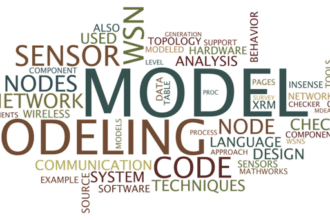To understand all the marketing information that bear the label “cloud computing” it is helpful to have a quick glossary of terms.
Grid Computing
Grid Computing is a collaboration model. Locally managed resources are virtualized and aggregated in a larger, more capable resource. Grid computing is concerned with coordinating problem solving in virtual organizations and typically is associated with large and complex “Grand Challenge” problems.
In the…
To understand all the marketing information that bear the label “cloud computing” it is helpful to have a quick glossary of terms.
Grid Computing
Grid Computing is a collaboration model. Locally managed resources are virtualized and aggregated in a larger, more capable resource. Grid computing is concerned with coordinating problem solving in virtual organizations and typically is associated with large and complex “Grand Challenge” problems.
In the scientific community, multi-institutional collaboration is required to have any hope of solving fundamental questions as they arise in high-energy physics, fusion or climate research. It is in this community that the world wide web originated to fulfill the need for seamless document access among geographically dispersed team members, and it is also the birthplace of the grid. In 1990 the first HTML communication took place at CERN, and in 1994 the first grid was put together around the Supercomputing conference as a mechanism for all participants to share data and models. It was dubbed I-WAY at that time but it was the starting point of research to try to find solutions for security, resource management, job control, and data caching that are central to grid computing.
Examples are: Terra GRID, Euro GRID
Haas, or Hosting as a Service
HaaS is a business service model. There are a lot of activities in modern business that are not core operational differentiators. These essential but peripheral services are better outsourced to specialists who can leverage economies of scale. Payroll management, shipping, and web presence are three examples of services that tend to be outsourced for most modern businesss, particularly small and medium sized businesses (SMBs).
Examples are: Startlogic, Hostmonster, Rackspace
SaaS, or Software as a Service
SaaS is a software deployment model. Application functionality is provided to the user through a web interface and the SaaS provider manages hardware and software operation and maintenance.
Examples: Salesforce.com, Webex, Netsuite
SaaS is generally associated with business software and marketed as a service to lower the cost of internally managed software. SaaS allows customers to lower the initial cost of software licenses and computer hardware to run on.
- Web Site Hosting and Web Application Hosting Services are probably the most ubiquitous instances of the SaaS model
- Customer Resource Management, or CRM, has many different instances, for example Salesforce.com, Siebel, or Coghead
- Completely integrated Enterprise Resource Management systems are provided by SAP, Oracle, Netsuite, Epicor, or Infor
Storage-as-a-Service and Computing-as-a-Service are slightly different in nature compared to SaaS since the latter provides application functionality whereas in the former two, access to a resource is sold or rented.
Commercially, SaaS has carved out many different useful services. Unfortunately, this has lead to a fragmentation of the market with the associated interoperability and economic lock-in problems. When selecting a SaaS provider the overriding question should be if you can move your data to other providers or bring it in house. SaaS becomes less interesting at a larger scale or if you want to extract business intelligence from your data. Plan for success but manage for failure. If the SaaS provider does not have a productive mechanism to get all the data out of the service, think twice before signing a contract.
PaaS, or Platform as a Service
PaaS is a software life-cycle model. Applications are developed, tested, deployed, hosted, and maintained on the same integrated platform.
Examples: Bungee Lab Connect, Comrange AppProducer
Web Services
Web Services represent anything that serves data, information, or access through a web browser. This is such a nebulous group of functionality that this term is more confusing then it is helpful. For example, Amazon’s EC-2 is billed as Amazon Web Services, but really AWS rents you an appliance on which you can install your own machine image. That appliance can now do anything, from web site serving, to application serving, to data mining, to web indexing, to running your OpenOffice spreadsheet model. Google web services aggregate anything from email to calendaring to picture storage and of course web indexing, but it is distinctly different from Amazon’s web services.
Web 2.0
Web 2.0 refers to the proposed second generation of Internet-based services where data services such as social networks, blogs, and wiki’s are connected and add value to each other. Collaboration is central to this model and users generate information and police themselves.
<–URL–>







